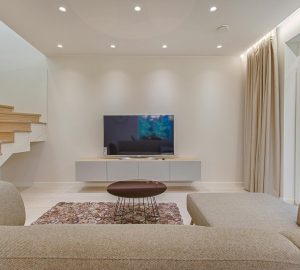There’s something magical about a well-lit traditional orangery. Whether you use yours as a dining room, reading nook, home office, or garden lounge, the amount of natural light it receives has a huge impact on how the space feels and functions.
Letting in more daylight doesn’t just make an orangery brighter. It also makes it warmer, more inviting, and more usable all year round. If you’re planning a new traditional orangery or looking to improve an existing one, here are some of the most effective ways to maximise natural light.
Start with the Right Glazing
Glazing is the most important element in any orangery design. Large panes of glass help to blur the lines between indoors and out, making the space feel open and airy.
For the clearest results, look for low-iron glass. This type of glazing has less of the greenish tint you often see in standard glass and allows more light to pass through. It’s ideal for windows, French doors, and roof lanterns.
For older or north-facing properties, you might also consider solar-control glazing. This clever coating reflects heat without reducing brightness, helping to maintain a comfortable temperature in summer without dulling the space.
Include a Roof Lantern
One of the signature features of a traditional orangery is a roof lantern: a raised glazed structure that sits at the centre of the flat roof. Not only do lanterns add visual interest, but they also flood the space with overhead light.
Positioning is key. If possible, align the roof lantern with a central dining table, kitchen island, or coffee table to create a natural focal point. Glazed ridge lanterns with minimal bars and slim frames allow even more sunlight to reach the interior.
Choose Slim Frames and Wide Openings
The more glass, the better. When planning windows or doors for your orangery, opt for designs that maximise glazed area and minimise bulky framing. Slimline timber or aluminium frames allow more daylight to enter without compromising strength or security.
Where possible, incorporate double doors or bi-folding panels that open onto the garden. This extends the visual connection with the outdoors and creates a light-filled transition between home and garden.
Use Pale Colours and Reflective Surfaces
Interior design has a big impact on how light travels through a space. In orangeries, where light enters from multiple directions, the right palette can make the room feel even more luminous.
Stick to soft, pale colours for walls and flooring – think off-white, cream, sand, or pale grey. These tones reflect light more effectively than darker shades and enhance the natural brightness of the room.
Glossy or satin finishes on surfaces like tiles, tables, and cabinets will also bounce light around. Consider using mirrored accents, metallic fixtures, or light-toned wood for an added lift.
Keep Window Dressings Light
Heavy curtains can block both light and airflow. Instead, opt for lightweight blinds or sheer fabrics that offer a degree of privacy without cutting off the sunlight.
Pleated blinds are a popular choice for orangeries. They can be fitted neatly to the frames of roof lanterns or side windows and come in a range of light-filtering fabrics. Many are now available with smart control options, so you can adjust them depending on the time of day.
Make Use of Glass Doors Internally
If your orangery connects to the main house through a hallway or secondary room, consider replacing solid internal doors with glazed or partially glazed alternatives. This allows light to travel deeper into the rest of the home and creates a more open-plan feel.
Crittall-style doors or large glass panels can work well here, especially in period properties where you want to maintain a classic look.
Embrace the Garden View
An orangery should feel connected to its garden, and how you landscape outside can also help to boost interior light.
Keep tall plants away from windows where possible, especially on the south-facing side. Low-growing borders, paved terraces, and well-maintained lawns all help reflect light back into the room. For climbing plants, like vines or wisteria, consider placing them off to the side where they won’t block key sightlines or shade important windows.
Lighting for Evenings and Overcast Days
While the focus is on natural light, it’s worth thinking about how the room will feel when the sun goes down. Layered lighting can help retain that same warm, airy atmosphere.
Install spotlights around the roof lantern perimeter, add a floor lamp in the corner, or use table lamps with soft bulbs to mimic the glow of daylight. The goal is to maintain the sense of openness and comfort that natural light brings, even after sunset.
Final Thought
Whether you’re building a brand-new orangery or refreshing an existing one, light should always be at the heart of your design. It can transform a simple space into somewhere you want to spend all day, from sunny breakfasts through to golden-hour evenings.
With the right glazing, colour choices, and subtle design details, you can create a bright, welcoming orangery that looks just as good as it feels.









